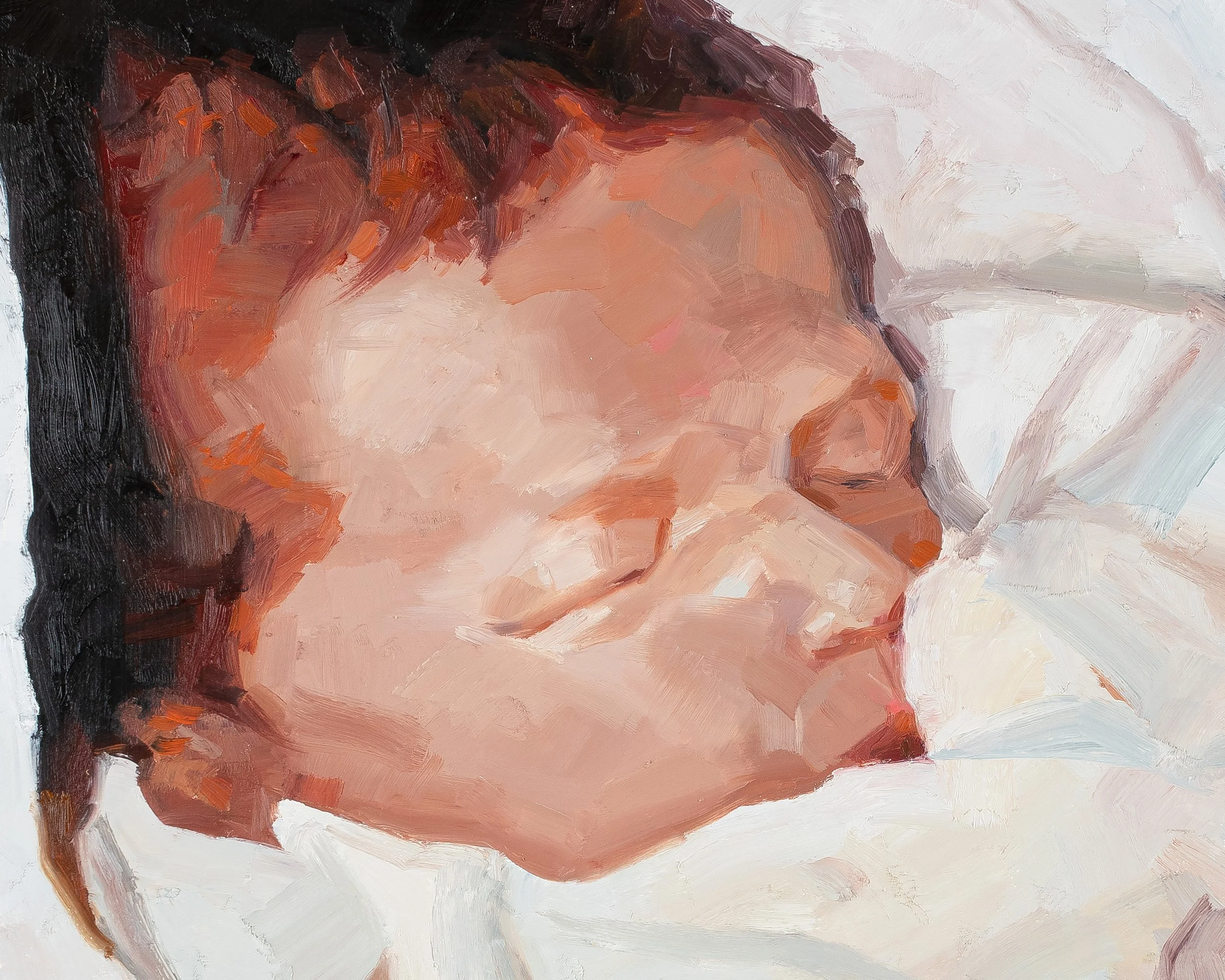Share, 2021
Share, 2021
Oil on linen
46 x 61 cm (18 x 24 in)
Share (2021) captures a pivotal moment in technological history—the first digital photo ever shared via a cell phone. In the painting, a newborn rests peacefully in her father’s arms, quietly announcing her arrival to the world. This image references the groundbreaking innovation of entrepreneur and technologist Philippe Kahn. In 1997, as Kahn awaited the birth of his daughter, he improvised a way to instantly share her first moments. By connecting a digital camera to his flip phone and syncing them with a few lines of code on his laptop, he created the first mobile photo-sharing device. The result was revolutionary: his daughter’s image was transmitted instantly to over 2,000 people, years before the advent of camera phones and social media. Share reflects not only a personal milestone but also a technological breakthrough that reshaped how we capture and share our lives. Share invites viewers to consider how a single innovation has transformed modern communication, bridging distances and redefining human connection in the digital age.
Q: Could you talk about the background and inspiration behind this piece?
Tan Mu: This work is inspired by the groundbreaking innovation of entrepreneur and technologist Philippe Kahn in 1997. While waiting for his daughter’s birth, Kahn ingeniously connected a digital camera to a flip phone and synced them with a few lines of code on his laptop, creating the first-ever mobile photo-sharing device. As a result, his daughter’s photo was instantly shared with over 2,000 people—years ahead of the emergence of camera phones and social media. That moment was not only a technological breakthrough but also a shift in how people share emotions and memories through technology. In 1997, real-time photo sharing was an unprecedented experience; today, it has become an integral part of our lives through social media. The evolution of technology has not only transformed the way we share experiences but has also profoundly reshaped our interactions with the world. With this work, I aim to capture a pivotal moment in the history of image transmission and internet technology.
Q: How do you perceive the relationship between technological tools and emotional expression?
Tan Mu: While technology continues to evolve, the emotions behind it remain constant. Kahn’s motivation to share the joy of his daughter’s birth mirrors why we share significant moments on social media today—to communicate emotions and preserve memories. Technology is merely a tool; at its core, it is emotion that drives human connection. Through this work, I seek to explore how technology serves as a conduit for emotional expression and reflect on the intricate relationship between tools and sentiment.
Q: Your paintings rarely depict human figures directly. What is special about the newborn imagery in this work?
Tan Mu: While this painting still revolves around the theme of technological breakthroughs, it shifts focus from depicting machines and technological nodes to the subject of technological sharing itself. Unlike my other works, which often highlight devices and systems, this piece centers on the content being shared—conveying an emotional moment and the joy of sharing something beautiful. My interest in depicting newborns comes from their purity and the unknown they represent. When a newborn enters the world, they exist in a state untouched by societal, gender, or cultural constructs—a form of raw existence. This state reminds me of the images captured by Mars rovers—landscapes that remain largely untouched by human intervention. In portraying a newborn, I hope to capture this sense of purity and the unknown while contemplating humanity’s earliest connections with the world.
Q: In your studio, paintings that explore the image of babies are displayed alongside works from the Horizon series. Is there a connection between them?
Tan Mu: There is an intrinsic link between these pieces and the Horizon series. In Horizon, I explore satellite perspectives of Earth and themes of space exploration, while Share symbolizes humanity’s exploration of the unknown and the beginning of new life through the image of a newborn. This connection reminds me of the final scene in 2001: A Space Odyssey, where a newborn gazes at Earth from space. By juxtaposing these themes, I aim to explore how technology extends our vision and to reflect on our relationship with the universe.


